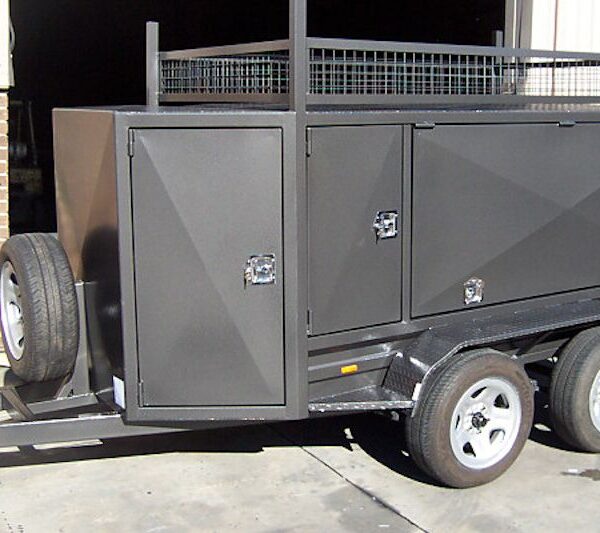
In today’s fast-paced world, efficient transportation is a necessity. With the rise of the gig economy and increasing urbanization, the demand for reliable cab services has never been higher. At the heart of this demand lies the Cab Dispatch System, a technological marvel that ensures seamless coordination between cab drivers and passengers. This article delves deep into the intricacies of cab dispatch systems, their benefits, and their impact on the transportation industry.
What is a Cab Dispatch System?
A Cab Dispatch System is a sophisticated software solution designed to automate the allocation of taxis to passengers. This system encompasses a range of functionalities from booking and route planning to real-time tracking and payment processing. By leveraging advanced algorithms and real-time data, cab dispatch systems enhance operational efficiency and customer satisfaction.
Key Features of a Cab Dispatch System
1. Real-Time GPS Tracking
One of the core features of a cab dispatch system is real-time GPS tracking. This allows the system to monitor the location of cabs and passengers continuously. The benefits include:
- Improved accuracy in estimating arrival times.
- Enhanced safety by tracking the journey of the cab.
- Optimized routing to reduce fuel consumption and travel time.
2. Automated Dispatching
Automated dispatching is crucial for minimizing wait times and maximizing fleet utilization. This feature automatically assigns the nearest available cab to a passenger based on real-time data, ensuring that:
- Passengers receive a cab in the shortest time possible.
- Drivers are efficiently assigned, reducing idle time.
3. Online Booking and Payment Integration
Modern cab dispatch systems support online booking through mobile apps or web portals. Additionally, they integrate payment gateways for seamless transactions. This combination provides:
- Convenience for users to book and pay for rides effortlessly.
- Cashless transactions, reducing the need for handling cash.
- Automated invoicing, simplifying the payment process for both passengers and drivers.
4. Driver and Passenger Management
These systems include comprehensive driver and passenger management features:
- Driver profiles with ratings and feedback mechanisms.
- Passenger profiles for personalized service and loyalty programs.
- Incident reporting for handling disputes and maintaining safety standards.
5. Analytics and Reporting
Analytics and reporting tools are vital for monitoring performance and making informed decisions. Cab dispatch systems provide detailed insights into:
- Ride statistics such as peak hours, popular routes, and average ride durations.
- Driver performance metrics like speed, punctuality, and customer ratings.
- Financial reports including revenue tracking and expense management.
Advantages of Implementing a Cab Dispatch System
1. Increased Operational Efficiency
By automating the dispatch process, cab companies can significantly reduce operational bottlenecks. The system’s ability to assign the nearest available driver minimizes downtime and optimizes fleet usage, leading to lower operational costs and increased revenue.
2. Enhanced Customer Experience
With features like real-time tracking, online booking, and easy payment options, cab dispatch systems greatly improve the overall customer experience. Passengers benefit from faster service, greater transparency, and more payment options, all contributing to higher satisfaction and loyalty.
3. Better Safety and Security
Safety is paramount in the transportation industry. Cab dispatch systems enhance safety through:
- GPS tracking, ensuring the journey can be monitored.
- Driver vetting, including background checks and regular performance reviews.
- Emergency response features, allowing passengers to alert authorities in case of an incident.
4. Scalability and Flexibility
Cab dispatch systems are designed to scale as the business grows. Whether a company operates a small fleet or a large one, the system can accommodate increasing numbers of users and vehicles without compromising on performance. Additionally, the system can be customized to meet specific business needs.
5. Environmental Benefits
Optimized routing and reduced idle time contribute to lower fuel consumption and reduced emissions. As more companies and drivers embrace these systems, the cumulative environmental impact can be significant, promoting greener urban mobility.
How to Choose the Right Cab Dispatch System
Selecting the right cab dispatch system is crucial for the success of any transportation business. Here are key considerations to guide the decision:
1. Assessing Business Needs
Understand the specific needs of your business. Are you focusing on local city rides or long-distance trips? Do you require specialized services such as luxury vehicles or ridesharing options? Tailoring the system to your business model is essential.
2. Evaluating Features and Functionality
Look for a system that offers a comprehensive suite of features. Essential features include:
- Real-time tracking
- Automated dispatching
- Online booking and payment
- Driver and passenger management
- Analytics and reporting
3. User-Friendly Interface
Both drivers and passengers should find the system easy to use. A clean, intuitive interface reduces the learning curve and enhances user satisfaction. Consider systems that offer customizable dashboards and mobile app integration.
4. Integration Capabilities
Ensure the system can integrate with other software you use, such as accounting systems, CRM tools, or existing fleet management solutions. This integration is vital for seamless operations and data flow.
5. Cost and ROI
While cost is an important factor, focus on the value and ROI the system provides. Consider the long-term benefits such as increased efficiency, higher customer satisfaction, and reduced operational costs. Compare pricing models to find one that aligns with your budget and business goals.
Future Trends in Cab Dispatch Systems
As technology continues to evolve, cab dispatch systems are expected to incorporate innovative features that further enhance their capabilities:
1. Artificial Intelligence and Machine Learning
AI and machine learning will play a significant role in predicting demand patterns, optimizing routes, and personalizing customer experiences. These technologies can analyze vast amounts of data to provide insights that improve service efficiency.
2. Autonomous Vehicles
With the advent of autonomous vehicles, cab dispatch systems will need to adapt to manage fleets of self-driving cars. These systems will handle vehicle-to-passenger communication, routing, and maintenance scheduling for autonomous cabs.
3. Enhanced Security Measures
As cybersecurity threats grow, cab dispatch systems will need to incorporate advanced security protocols to protect sensitive data and ensure the safety of passengers and drivers. This includes encryption technologies and multi-factor authentication.
4. Integration with Smart City Infrastructure
Future cab dispatch systems will likely integrate with smart city infrastructure to improve traffic management and reduce congestion. This integration could facilitate dynamic pricing, smart routing, and real-time traffic updates.
Conclusion
The Cab Dispatch System is a cornerstone of modern transportation, revolutionizing how we move through cities and beyond. By enhancing operational efficiency, improving customer satisfaction, and paving the way for future advancements, these systems are indispensable for any forward-thinking cab company. Embracing this technology not only meets current demands but also prepares businesses for the challenges and opportunities of tomorrow.











